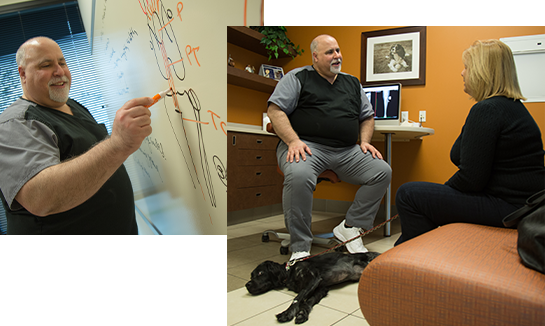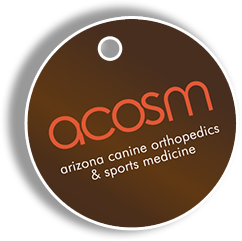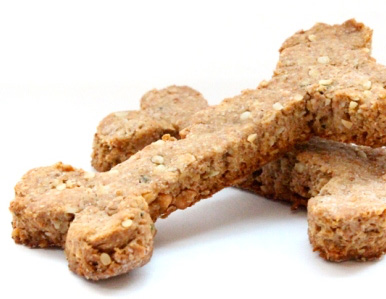Second Look Arthroscopic Findings After Tibial Plateau Leveling Osteotomy
Hulse, D. et al., “Second Look Arthroscopic Findings After Tibial Plateau Leveling.” Veterinary Surgery. Vol 39 (2010): 350-354.
Key Point: The early diagnosis and treatment of cranial cruciate ligament disease by tibial plateau leveling osteotomy (TPLO) in cases of partial/stable disease may preserve intact ligament resulting in improved joint stability, decreased articular cartilage wear and reduced incidence of meniscal injury.
Cranial cruciate ligament disease (CCLD) is a common cause for hindlimb lameness in dogs. CCLD is a degenerative condition in which progressive weakening of the ligament leads to fiber degeneration, partial tearing and eventual rupture of the ligament over time. Rupture of the ligament results in knee joint instability and can be associated with concurrent injury to the medial meniscus resulting in pain secondary to joint inflammation and chronic osteoarthritis.
It is common for patients presenting for evaluation of an acute-onset of hindlimb lameness to have a prior history of low-grade or intermittent lameness. Similarly, patients may present with lameness, knee pain and swelling in the absence of overt joint instability. These cases represent early but stable ligament degeneration (so-called “partial tears”). Though the cranial cruciate ligament is most responsible for abnormal movement of the knee in a “head to tail” direction, the ligament also plays an important role in rotational stability and maintains the normal relationship between the femur and tibia, which may impact secondary meniscal injuries and overall joint instability. As damage to the ligament occurs progressively in most dogs, partial tears inevitably worsen with time leading to progressively greater instability and joint damage. Identifying and treating early ligament degeneration, with the preservation of functionally healthy ligament may help minimize the long-term effects of CCLD on the joint.
In the study by Hulse et al. the outcomes of repeat knee arthroscopy, performed up to 5 years following TPLO, were reported for a population of 63 dogs. In this study, 17/63 dogs were diagnosed with partial, competent (stable) cranial cruciate ligament tears compared with 46/63 that had either complete or partial but incompetent (unstable) tears. In all dogs with partial tears, repeat arthroscopy revealed normal or near normal structures within the joint, including preservation of the remainder of the cranial cruciate ligament and no meniscal injury. In comparison, repeat evaluation of all joints with complete or incompetent cruciate ligament tears demonstrated a variety of pathologic changes including medial meniscal tears, cartilage wear and caudal cruciate ligament injury. The findings of this study suggest that TPLO may have a protective effect on the ligament when a portion of the ligament remains functionally intact. The authors propose that this effect is due to the reduced strain placed on the ligament followed plateau leveling.
Surgical treatment of CCLD is generally considered to be associated with superior functional outcomes compared with conservative management. While many options for surgery exist, tibial plateau leveling osteotomy (TPLO) is widely considered to be the “gold-standard” in most dogs, regardless of size, due to the relatively low complication rate, rapid return to function and good long-term outcome. Surgery is generally recommended whether ligament tears are partial or complete, with some exception in cases of very early degeneration without fiber tearing. While the procedure may be the same, the rationale for TPLO is different when treating intact competent or completely ruptured ligaments. In both cases, TPLO helps to impart dynamic stability to the joint, altering the mechanics of the knee slightly to maintain stability with weight bearing. In the case of partial competent tears, TPLO also acts to offload the ligament, preserving the healthy portion and maintaining static stability as well.
It's worth noting the role arthroscopy plays in the evaluation and management of CCLD in dogs. The ability to diagnose subtle injuries to the CCL is facilitated by arthroscopy, with some changes so subtle that only after manipulating the ligament under magnification, can the damage be identified. The fine nature of arthroscopic instruments allow for precise debridement (cleaning away) of abnormal tissue while minimizing removal of healthy ligament. At ACOSM, our surgeons believe strongly in a comprehensive and proactive approach management of cranial cruciate ligament disease. We would love to tell you more about it during your consultation!

Get Informed
Schedule a Consultation
Make no mistake, all surgical procedures are serious. Get the information you need and know your options. Then make an informed decision. Like any service, not all veterinary services are equal. Call to schedule or ask questions.
Call our clinic at 480.998.5999
or Email us.
FAQ
What Makes ACOSM Stand Out?
We pride ourselves on doing things differently. We insist on providing premier service to our patients and their caregivers. There's a saying, "Price is what you pay; value is what you get." At ACOSM, delivering on value is our mission.
We're proud of our experience, skill, and outcomes; it puts us in a category of one, which means you'll experience things with us not promised by any other veterinarian in AZ.
Dog Blog
Distal Femoral Osteotomy for Comprehensive Treatment of Medial Patella Luxation
Three-Dimensional Printed Patient Specific Guides for Acute Correction of Deformities
Comparison of Arthroscopy and Arthrotomy for Diagnosis of Medial Meniscal Pathology
Second Look Arthroscopic Findings After Tibial Plateau Leveling Osteotomy
Resources
New Patient Registration Forms
- New Patient Packet

- New Patient Packet - Online
 New online form!
New online form! - Patient Referral Form

- Patient Referral Form - Online


